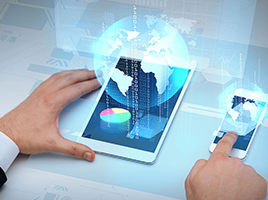[av_one_full first min_height=” vertical_alignment=” space=” custom_margin=” margin=’0px’ link=” linktarget=” link_hover=” padding=’0px’ border=” border_color=” radius=’0px’ background=’bg_color’ background_color=” background_gradient_color1=” background_gradient_color2=” background_gradient_direction=’vertical’ src=” background_position=’top left’ background_repeat=’no-repeat’ animation=” mobile_breaking=” mobile_display=” av_uid=’av-4al3xb’]
[av_video src=’https://www.youtube.com/watch?v=1mhqN84zd1s’ mobile_image=” attachment=” attachment_size=” format=’16-9′ width=’16’ height=’9′ conditional_play=” av_uid=’av-jp3xynkw’ custom_class=”]
[av_textblock size=” font_color=” color=” av-medium-font-size=” av-small-font-size=” av-mini-font-size=” av_uid=’av-2w9rlb’ custom_class=” admin_preview_bg=”]
Here is the Top 5 ERP News of the week, Nov 26th.
- ERP Trends in the Retail Industry in 2018
- How Are Smart Cities Leading Change?
- ERP: Silver in the Clouds
- Six Trends Will Impact Your 2019 Digital Transformation Journey
- How Big Data Has Changed the Music Industry
5 ERP Trends in the Retail Industry in 2018
Enterprise Resource Planning (ERP) software has helped numerous businesses across multiple industries integrate their day-to-day operations and streamline business management processes. The retail industry is one of the largest users of ERP software globally. As ERP software vendors constantly work to create less complex, more powerful and more affordable ERP solutions for the retail industry, we’re set to see changes in the ERP software market.
How Are Smart Cities Leading Change?
“Smart Cities” are a hot topic these days. India has undertaken an initiative to create 100 smart cities across the country. Partnerships with technology companies are underway in cities from Singapore to Toronto. But what does it mean for a city to be “smart”? A convergence of new technologies from the cloud to mobile devices, to the Internet of Things, are driving new government services that are more widely available, cost less, and are easier to deliver, monitor and track. A simple example: San Francisco installed sensors on curbside parking meters and in parking garages, and connected them to a mobile app that tells motorists where parking is available. This leads to less circling, lower traffic volumes and fewer emissions.
ERP: Silver in the Clouds
Bringing together enterprise resource planning (ERP) and cloud computing is proving to be a game changer for software vendors and their customers. Although ERP platforms have been a staple for large enterprises since the 1990s, their ability to give executives a bird’s eye view of what’s happening in their organisation, by drawing information from a diverse range of functions like logistics and finance, does not come hassle-free.
These Six Trends Will Impact Your 2019 Digital Transformation Journey
Digital moonshots, apps at the edge and information enlightenment will be among the enterprise digital trends to watch in 2019, according to new predictions by DXC Technology, a leading independent, end-to-end IT services company. Here are the digital transformation trends that can impact your 2019 plans.
How Big Data Has Changed The Music Industry
Spotify has announced their first music streaming analytics tool, also known as Publishing Analytics. It would give music publishing companies daily streaming statistics for recordings, such as data about the songwriters and how many albums they have sold since their debut. Furthermore, the program will aim to accurately evaluate the performance of playlists on Spotify so it can support songwriters who are eager to upload their music onto the streaming platform. Their streaming data is derived from global sources and aims to provide valuable insight into the demographics of Spotify users. In fact, this will help music publishers collect royalties, market albums, and collaborate with songwriters in their careers. But what does this have to do with big data’s influence on the music industry?
[/av_textblock]
[/av_one_full]




